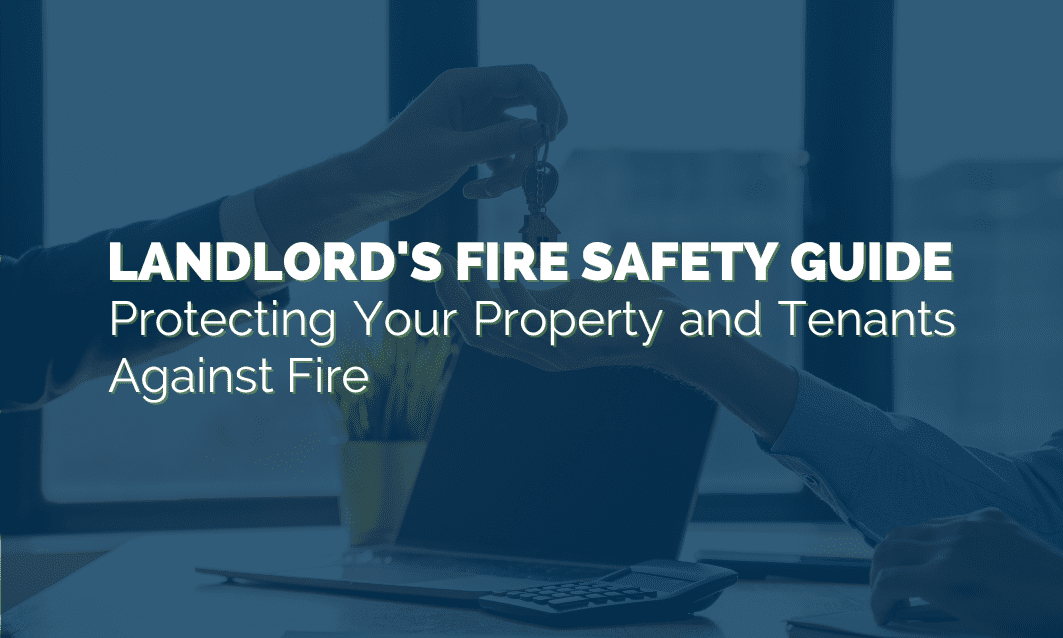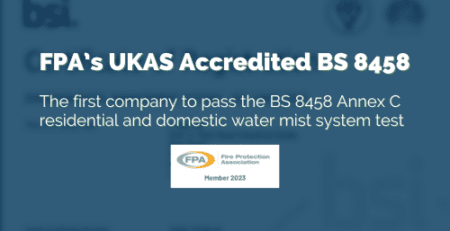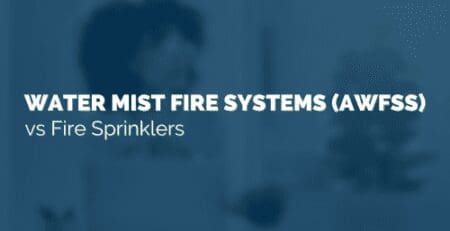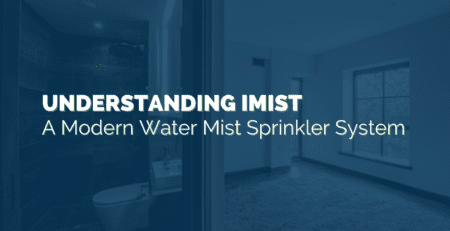Landlord’s Fire Safety Guide: Protecting Your Property and Tenants Against Fire
As a landlord, ensuring the safety of your tenants and property is paramount. Fires can pose significant risks to both life and investment, making it essential to implement robust fire safety measures. This landlord fire safety guide provides essential insights into fire safety practices for landlords, including fire suppression, fire doors, smoke detectors, and compartmentation.
The NRLA’s (National Residential Landlords Association) most reported reason for a fire claim in the five-year period up to November 2023 was electrical causes, which accounted for 28% of all fire claims, followed by cooking and arson, both of which accounted for 14%.
Understanding Fire Risks:
Familiarise yourself with common causes of fires in rental properties, such as electrical faults, cooking mishaps, and heating equipment malfunctions.
Recognise the potential consequences of fires, including property damage, injuries, and fatalities.
A house fire can double in size every minute that it is alight. This is why it is so important to have the correct fire safety measure in place to save lives, and safe your properties.
Which fire safety measures are best for you?
Fire Doors:
Install fire-resistant doors in key areas, such as stairwells, corridors, and entranceways, to prevent the spread of fire and smoke.
Ensure fire doors are properly maintained, with self-closing mechanisms and intact seals to maximise their effectiveness.
Fire-rated doors offer varying levels of protection. Silicone-based sealants and intumescent strips enhance their fire resistance. Closing mechanisms like hold-back devices are common, crucial for containing fires. Regular checks and maintenance ensure their efficacy.
Fire doors have a fire-resistant solid core. These are tested to ensure that they block the spread of fire for a set period of time, normally 30 or 60 minutes. They are mandatory in non-domestic and residential properties, enforced by regulations such as the Regulatory Reform (Fire Safety) Order (RRO) 2005. Additional requirements exist for high-rise buildings.
Starting January 2023, the Fire Safety (England) Regulations 2022 mandate quarterly checks for fire doors in communal areas and annual checks for flat entrance doors in multi-occupied residential buildings over 11 meters tall.
iMist Fire Suppression System:
iMist is a high-pressure water mist fire suppression system that effectively controls and suppresses fires by releasing a fine mist, which attacks all 3 sides of the fire triangle.
Fuel: By rapidly cooling the fire zone with a fine mist of water droplets, the iMist system reduces the temperature of the fuel source, making it less likely to sustain combustion. This effectively addresses the fuel side of the triangle.
Oxygen: The water mist generated by the iMist system can help displace oxygen around the fire, limiting the availability of this essential element for combustion. By reducing oxygen levels, the system disrupts the fire triangle, hindering the fire’s ability to continue burning.
Heat: Water mist acts as a heat sink, absorbing heat energy from the fire and surrounding surfaces. This reduces the temperature of the fire zone, suppressing flames and preventing the fire from spreading further. By controlling the heat generated by the fire, the iMist system helps to break the heat side of the fire triangle.
In summary, the iMist fire suppression system simultaneously combats all three elements of the fire triangle by cooling the fuel source, displacing oxygen, and reducing heat energy, thereby suppressing the fire and preventing its spread.
Key advantages of iMist system include its ability to minimise water damage compared to a traditional sprinkler system, its environmentally friendly nature, and its suitability for various property types.
Smoke Detectors:
Equip each rental unit with smoke detectors that comply with relevant safety standards.
Test smoke detectors regularly and replace batteries as needed to ensure they are always in working condition.
Compartmentation:
Compartmentation reduces the risk of fire spread by dividing a building into separate compartments, typically by fire-resistant walls and floors.
Each compartment acts as a barrier, containing the fire within its area of origin and preventing it from spreading rapidly throughout the building. This containment buys time for occupants to evacuate safely and for firefighters to respond effectively, ultimately limiting property damage and potential loss of life.
Use fire-resistant materials to construct walls, floors, and ceilings, creating fire barriers between different sections of the building.
Conducting Regular Inspections and Maintenance:
Schedule routine inspections and maintenance of fire safety equipment and fire suppression systems, including iMist, fire doors, and smoke detectors.
Address any maintenance issues promptly to ensure all fire safety measures remain functional and effective.
Educating Tenants:
Provide tenants with comprehensive fire safety guidelines, including instructions on evacuation procedures, fire extinguisher use, and reporting potential hazards.
Conduct regular fire drills to familiarise tenants with emergency protocols and evacuation routes.
Compliance with Regulations:
Stay informed about fire safety regulations and ensure your rental property complies with applicable standards and codes.
Keep documentation of inspections, maintenance records, and fire safety certifications to demonstrate compliance with regulatory requirements.
Prioritising fire safety in rental properties is crucial for landlords to protect both their investment and the well-being of tenants. By implementing a comprehensive fire safety strategy that includes iMist Fire Suppression systems, fire doors, smoke detectors, and compartmentation, landlords can significantly reduce the risk of fire-related incidents becoming fatal. Regular inspections, tenant education, and compliance with regulations further enhance the effectiveness of these measures, fostering a safe living environment for all occupants. Most fire services offer home fire safety visits (HFSV) and business fire safety advice and guidance, so do get in touch with your local fire brigade for further assistance.











